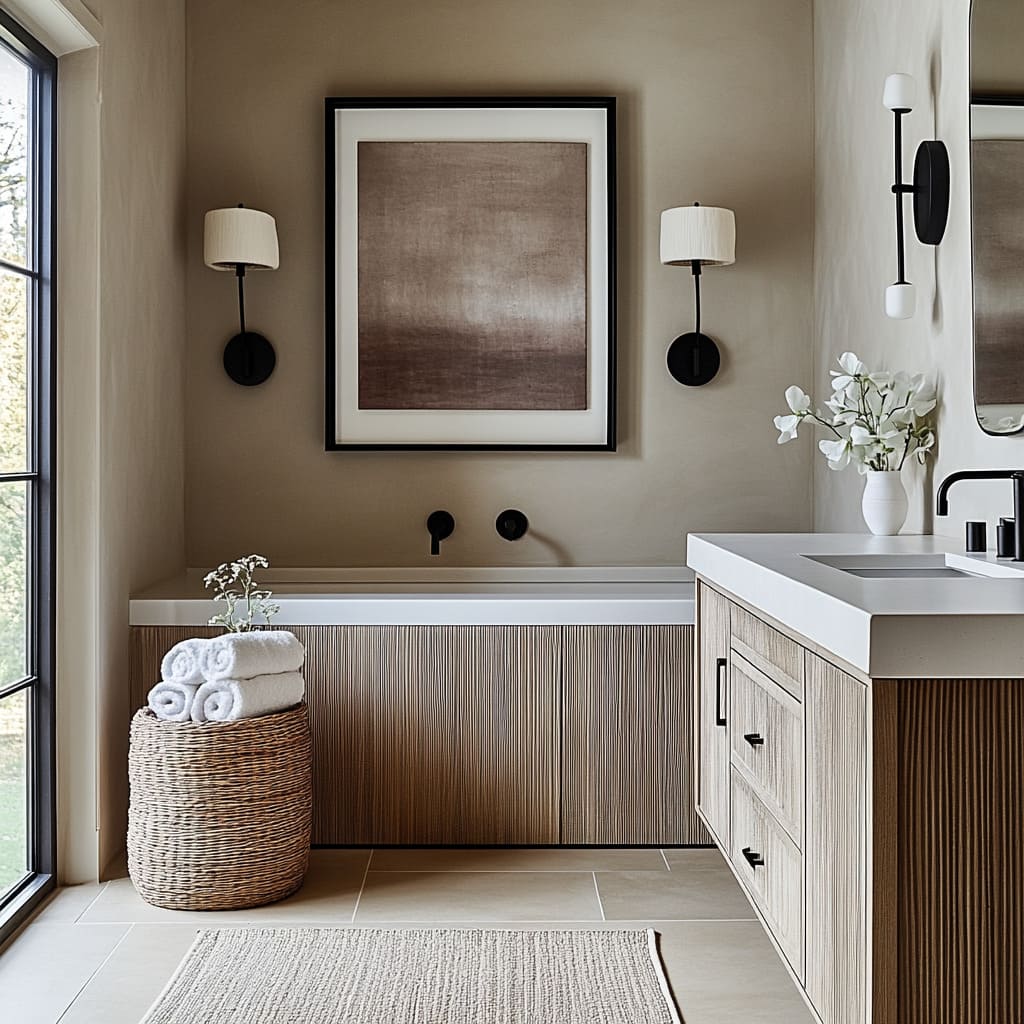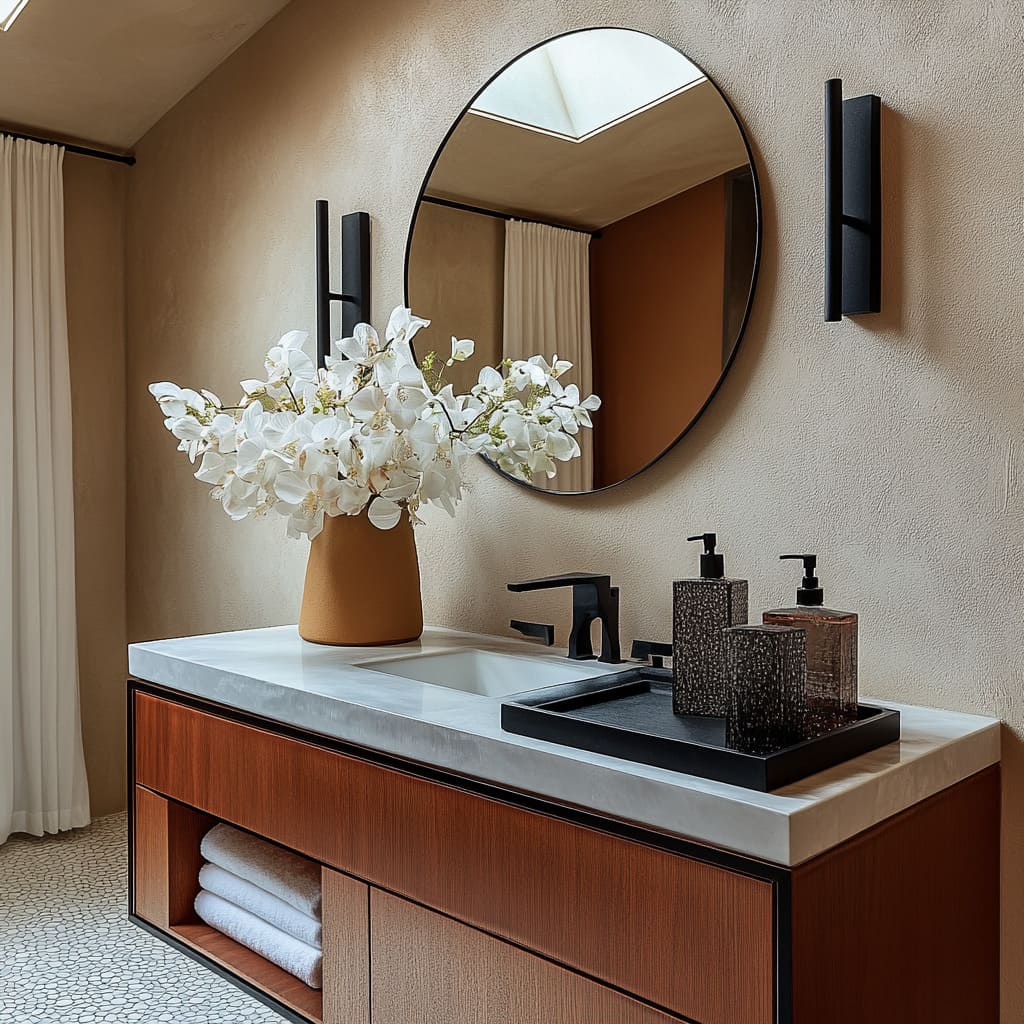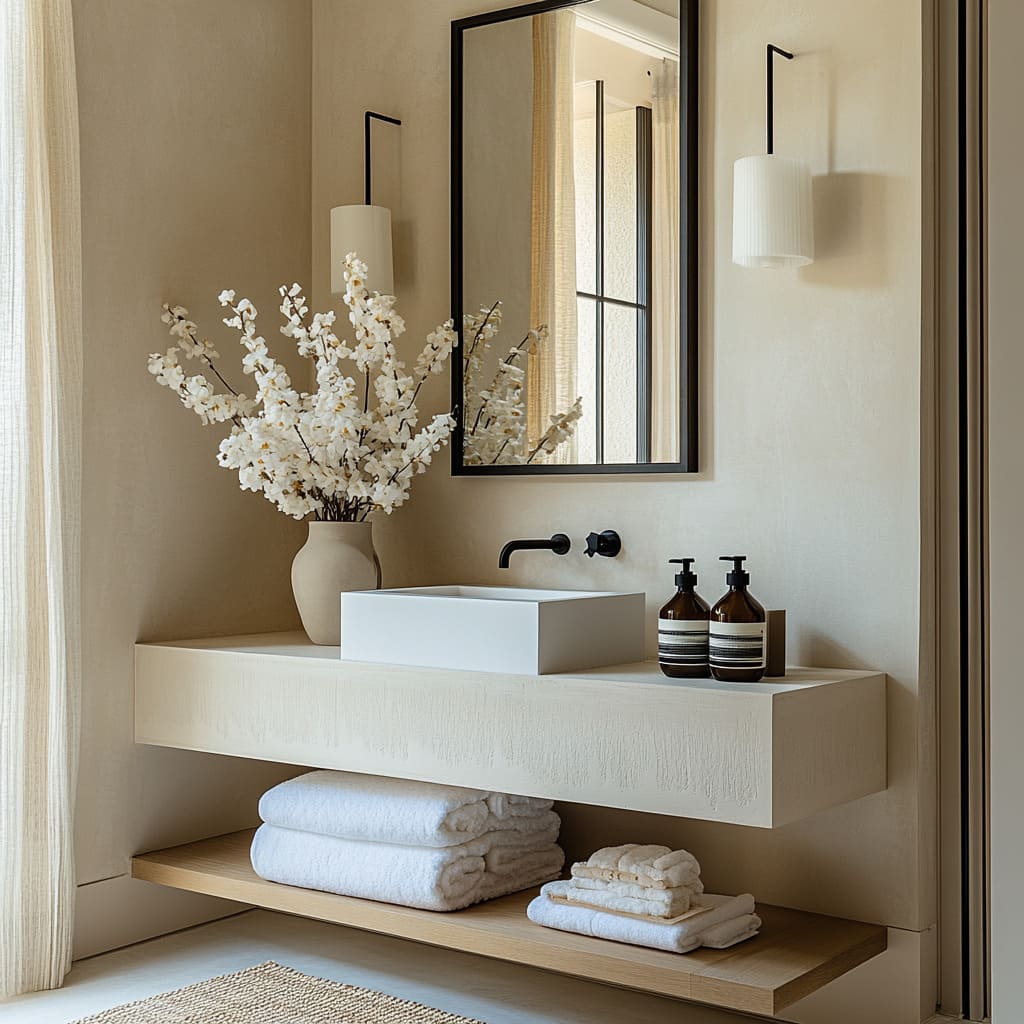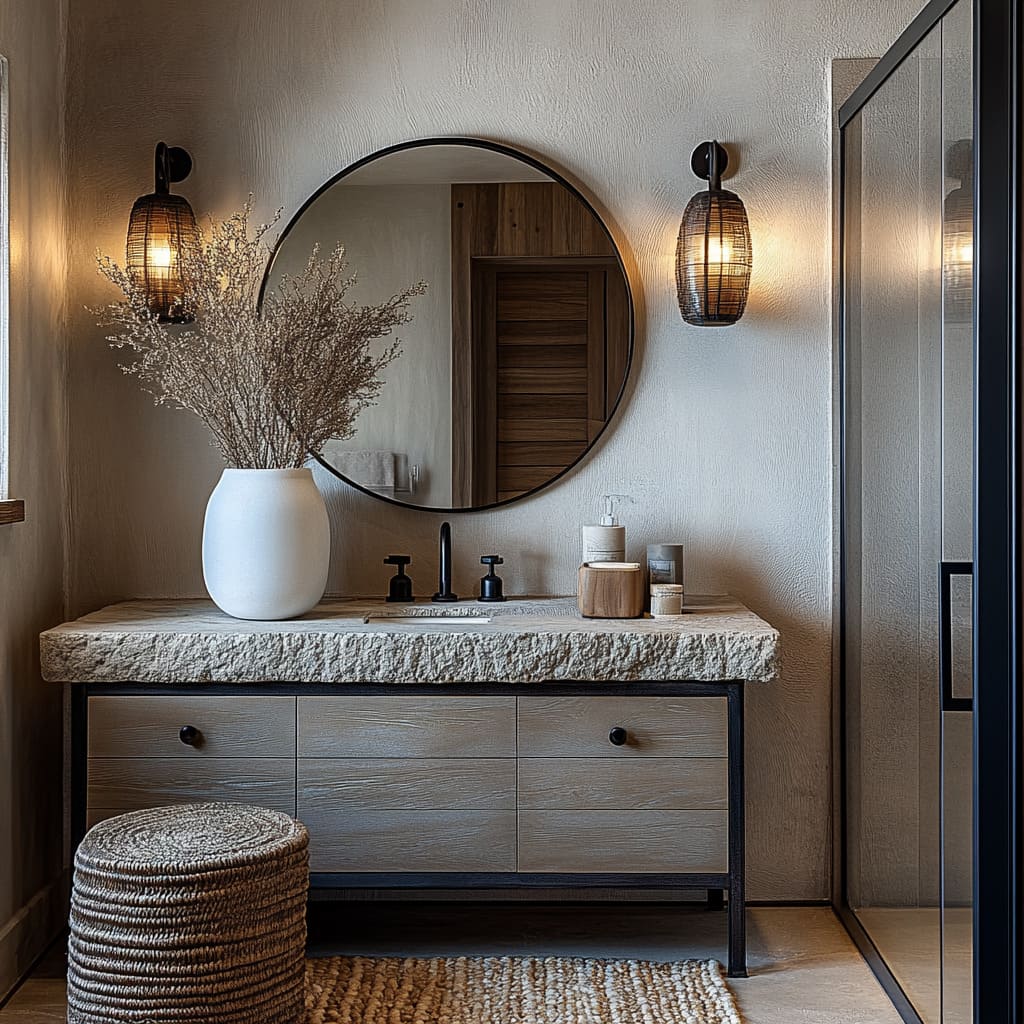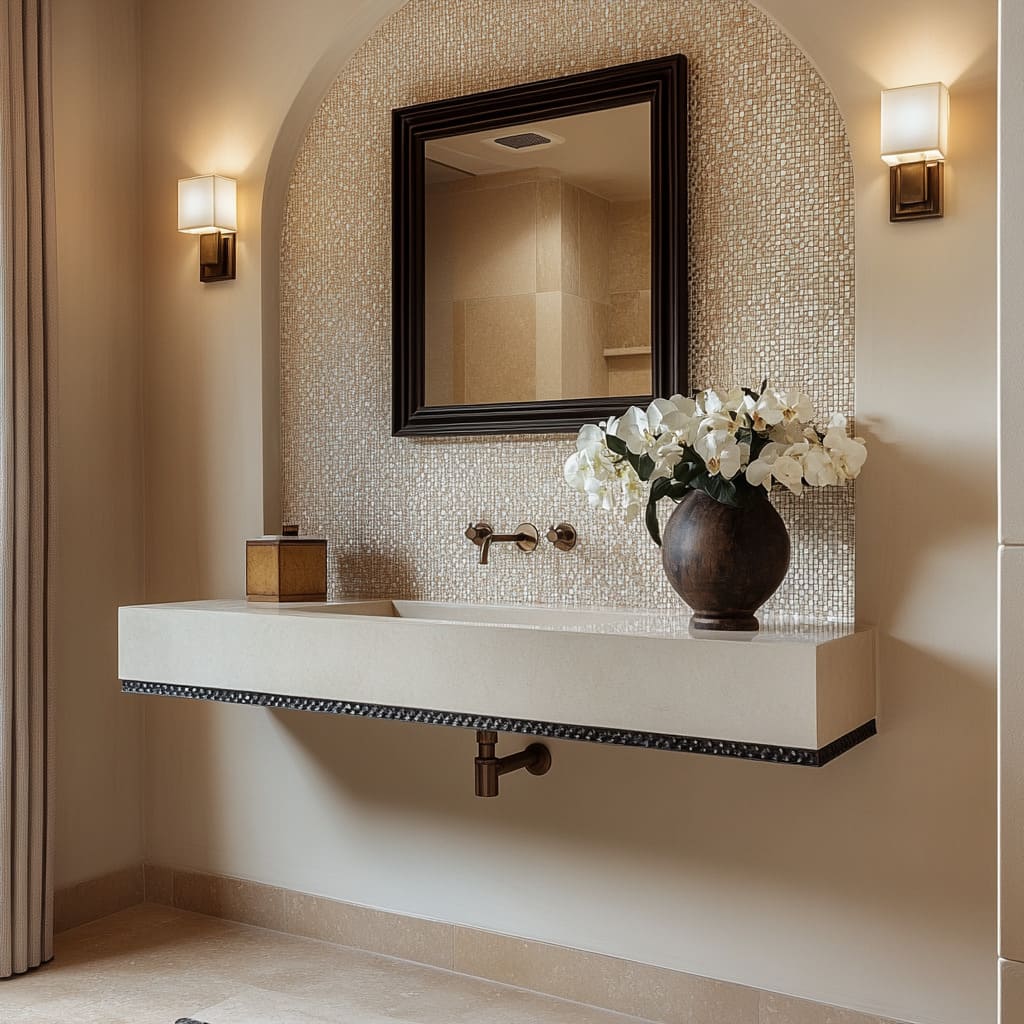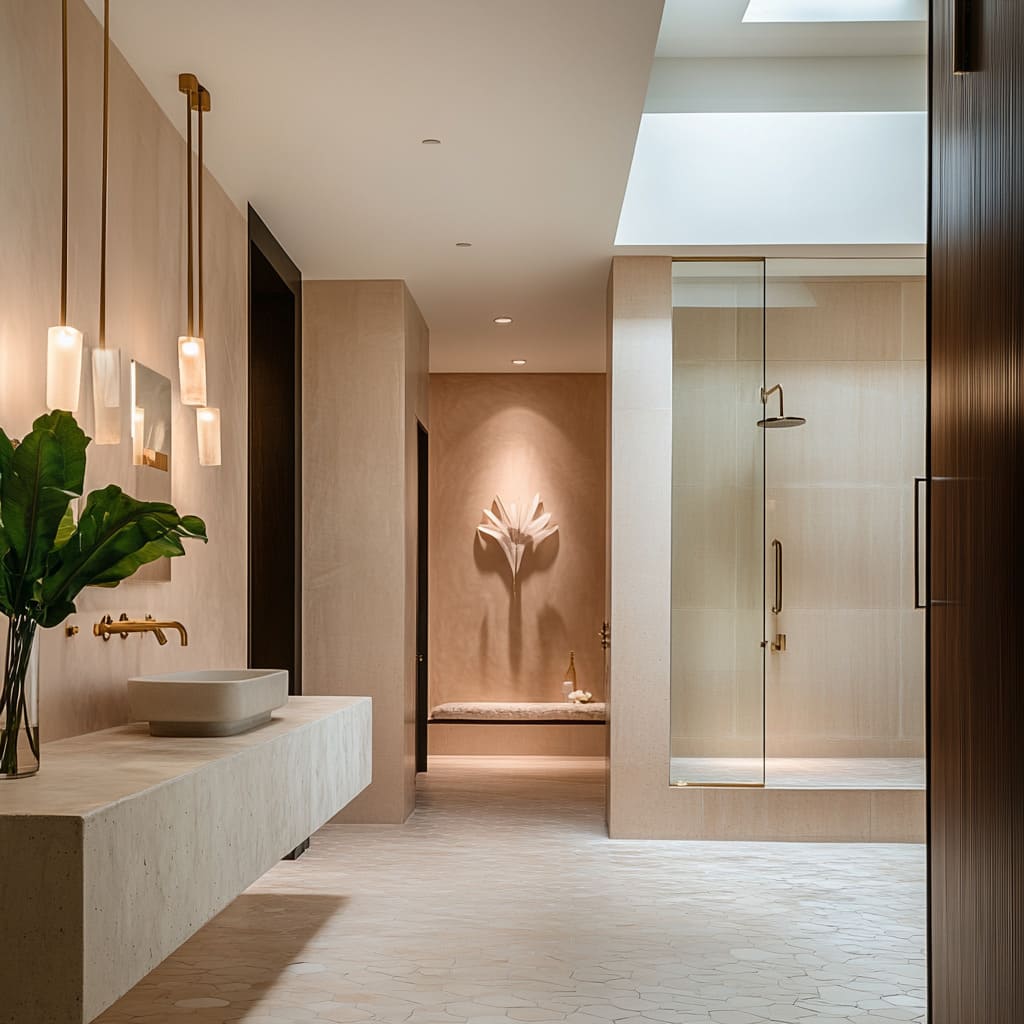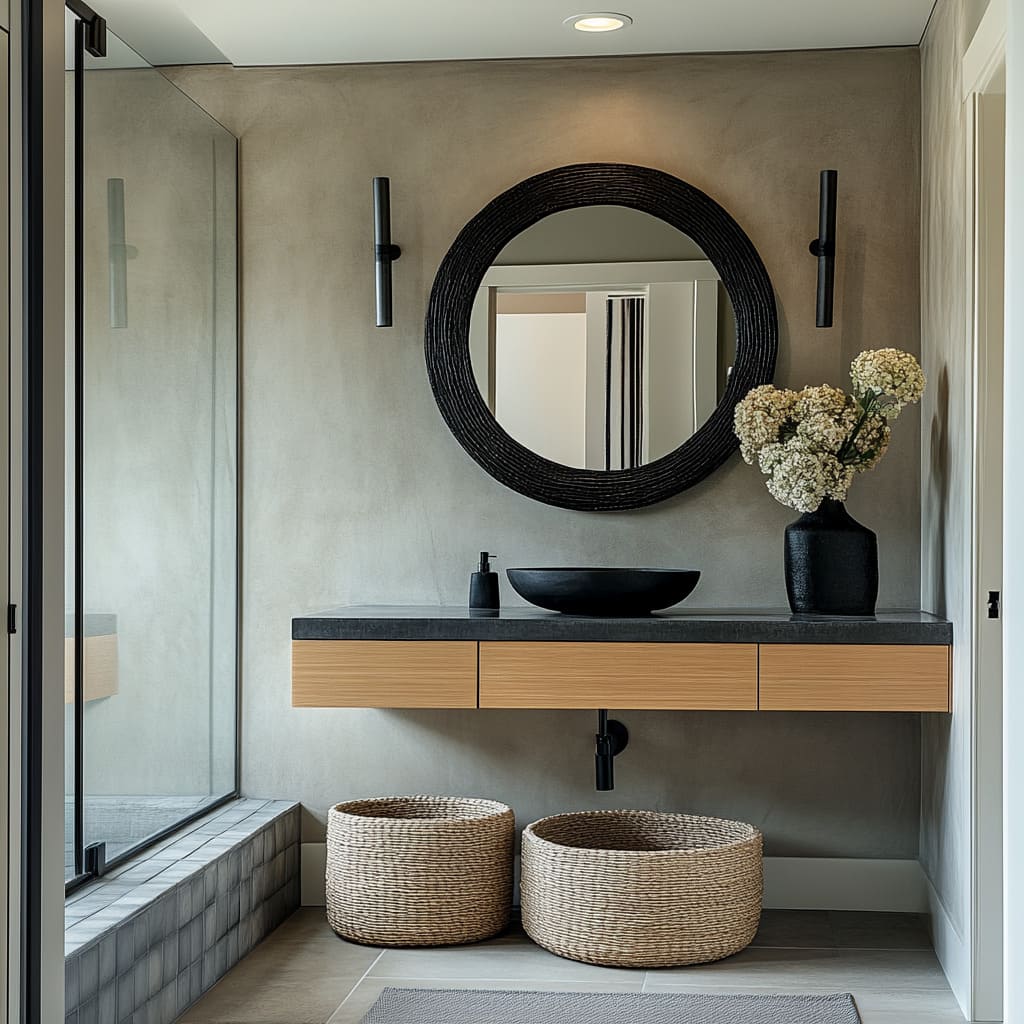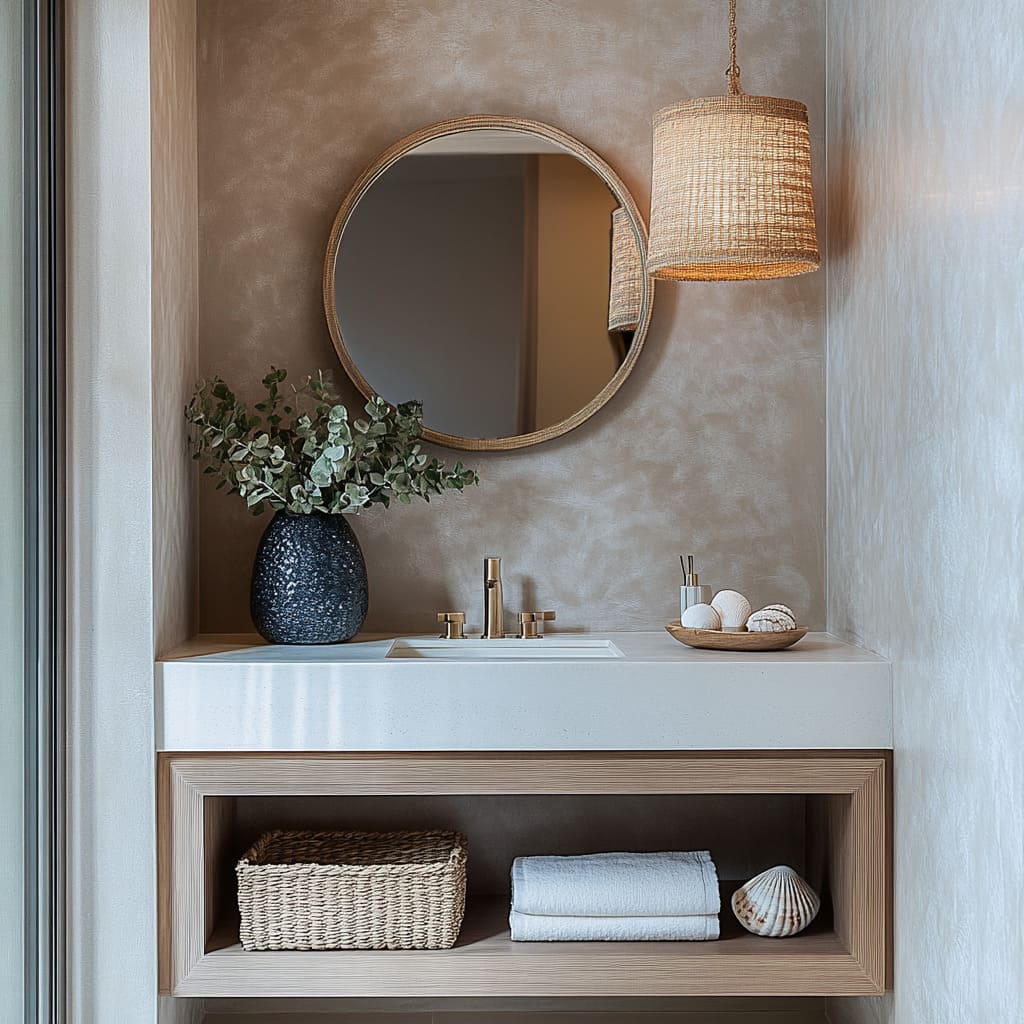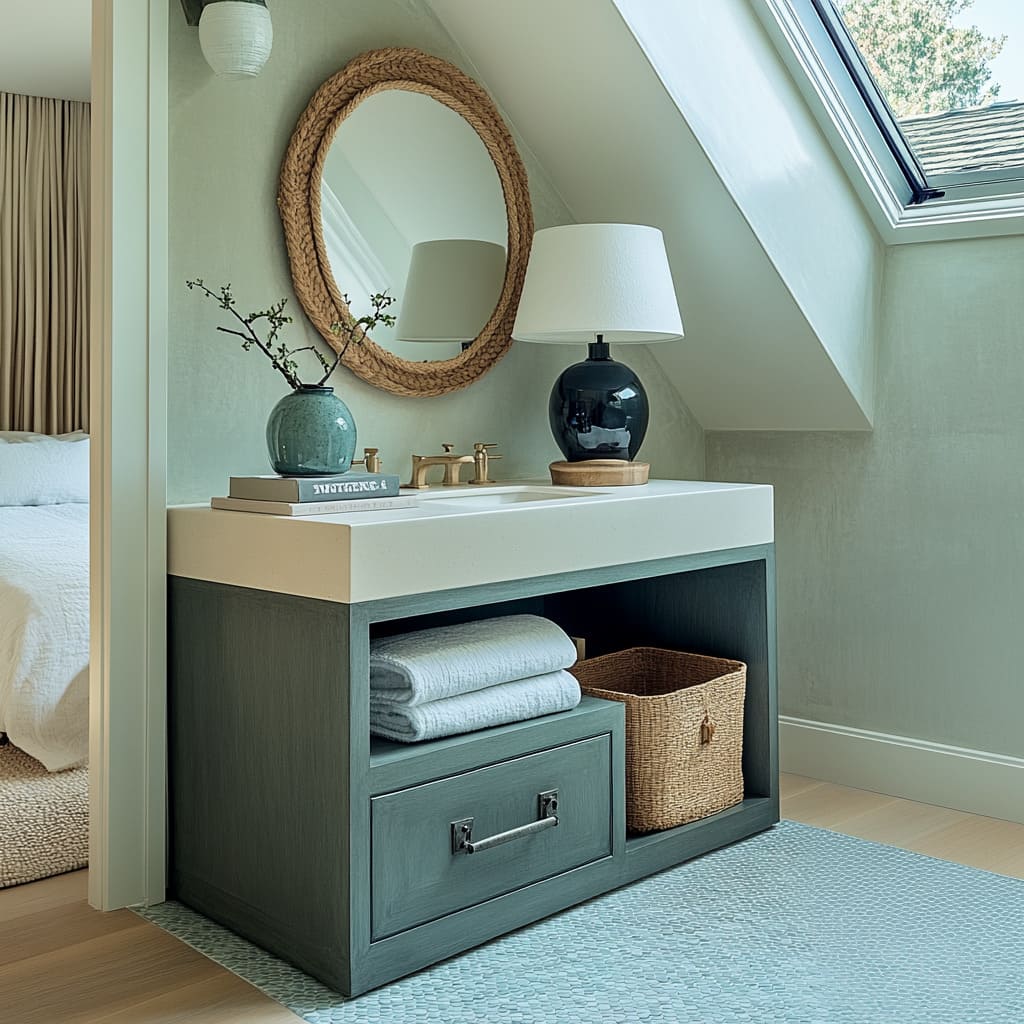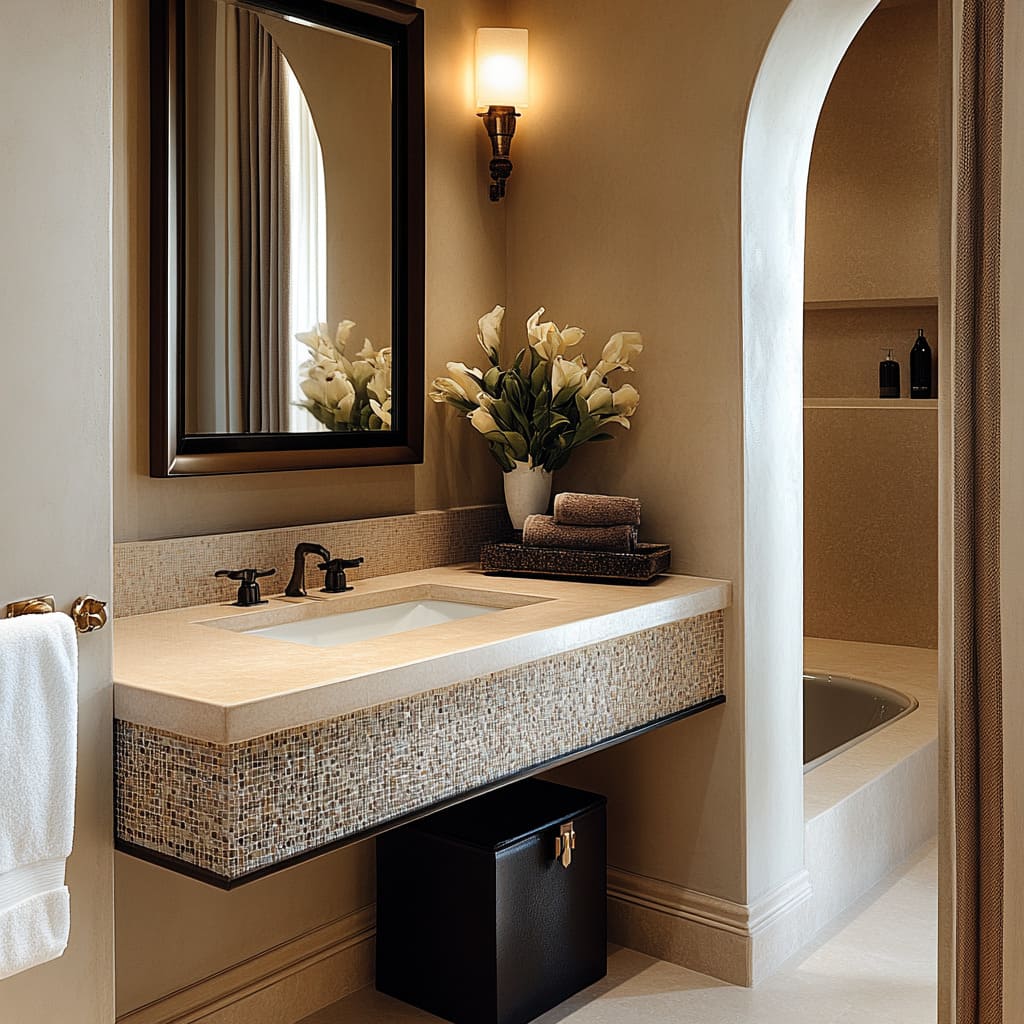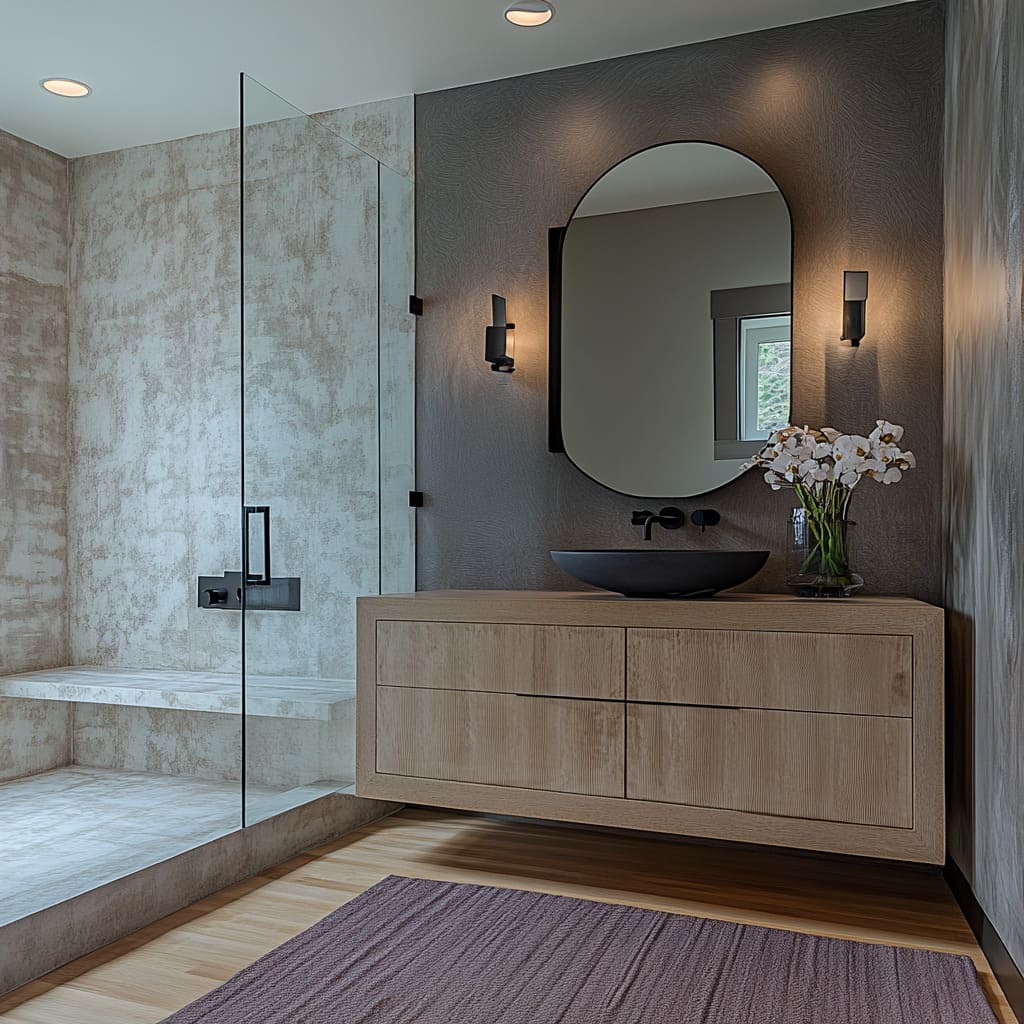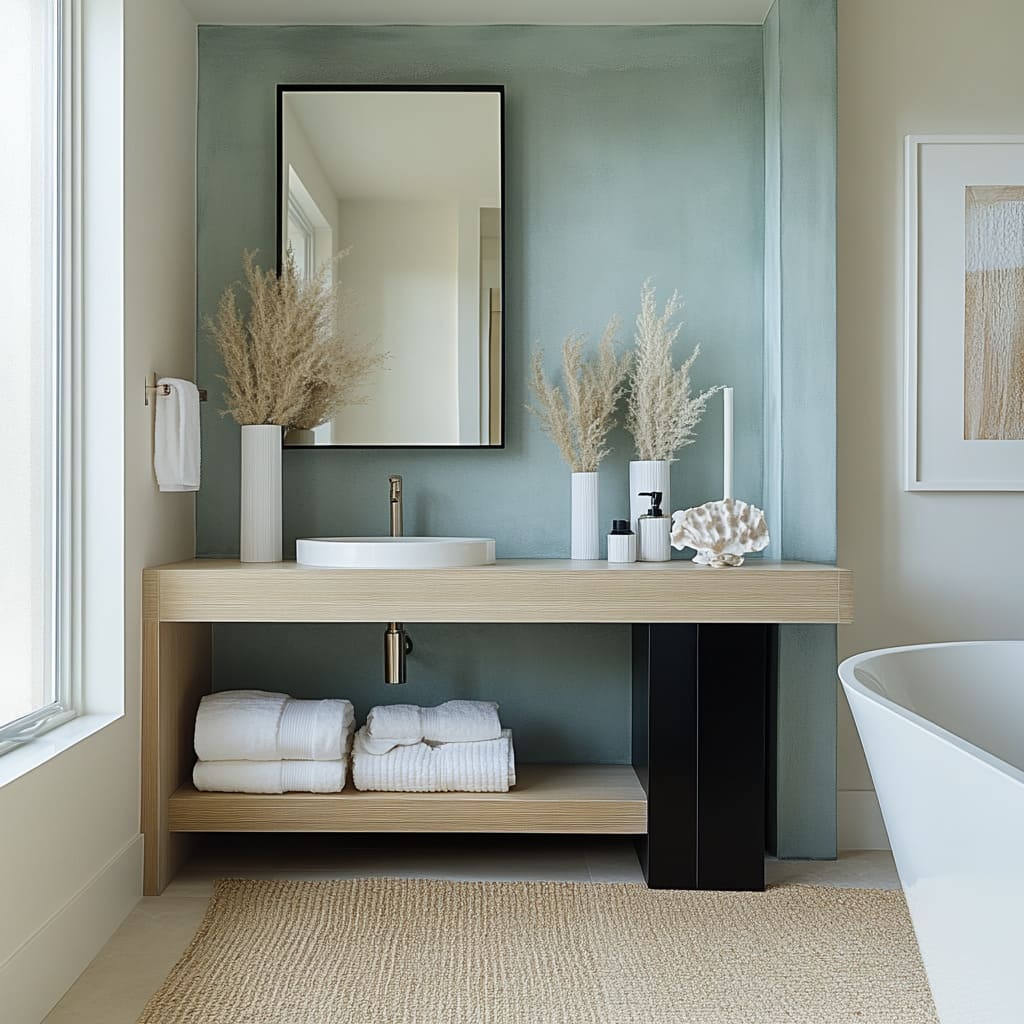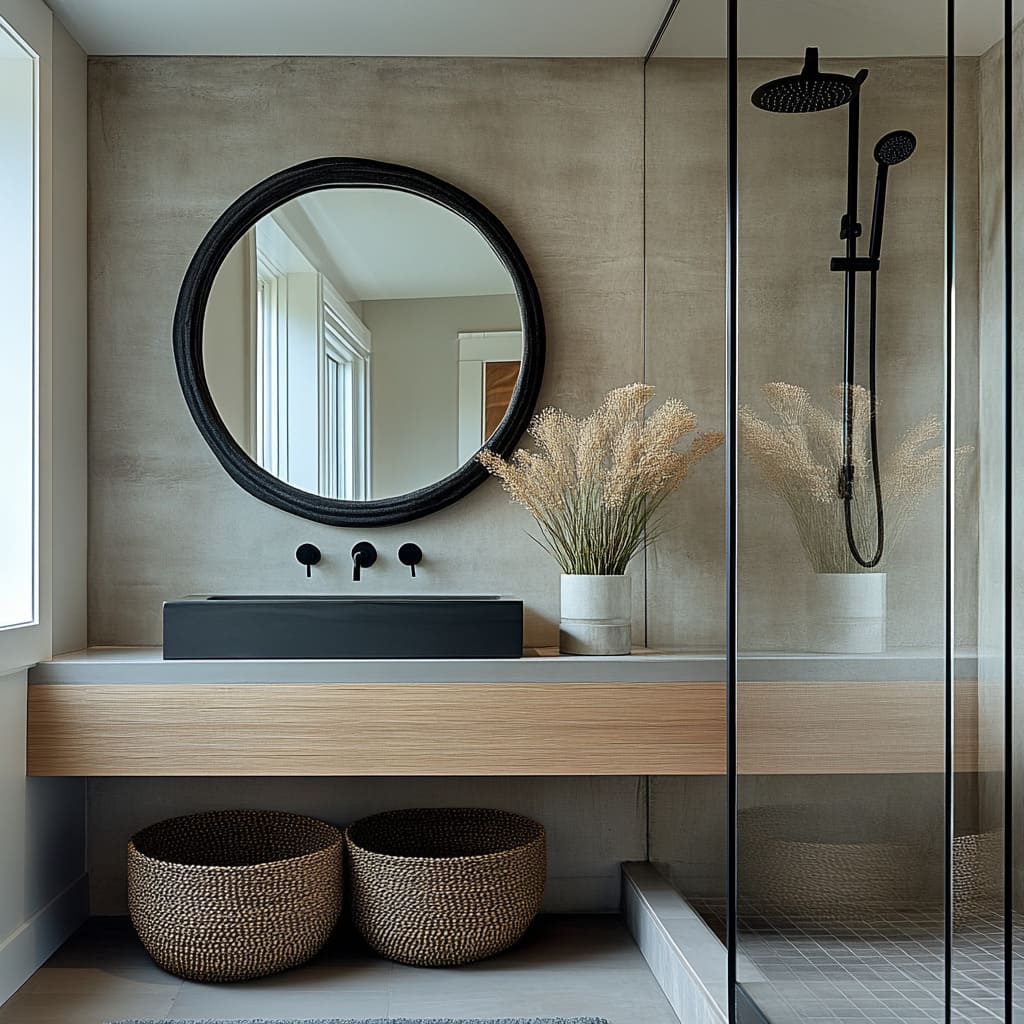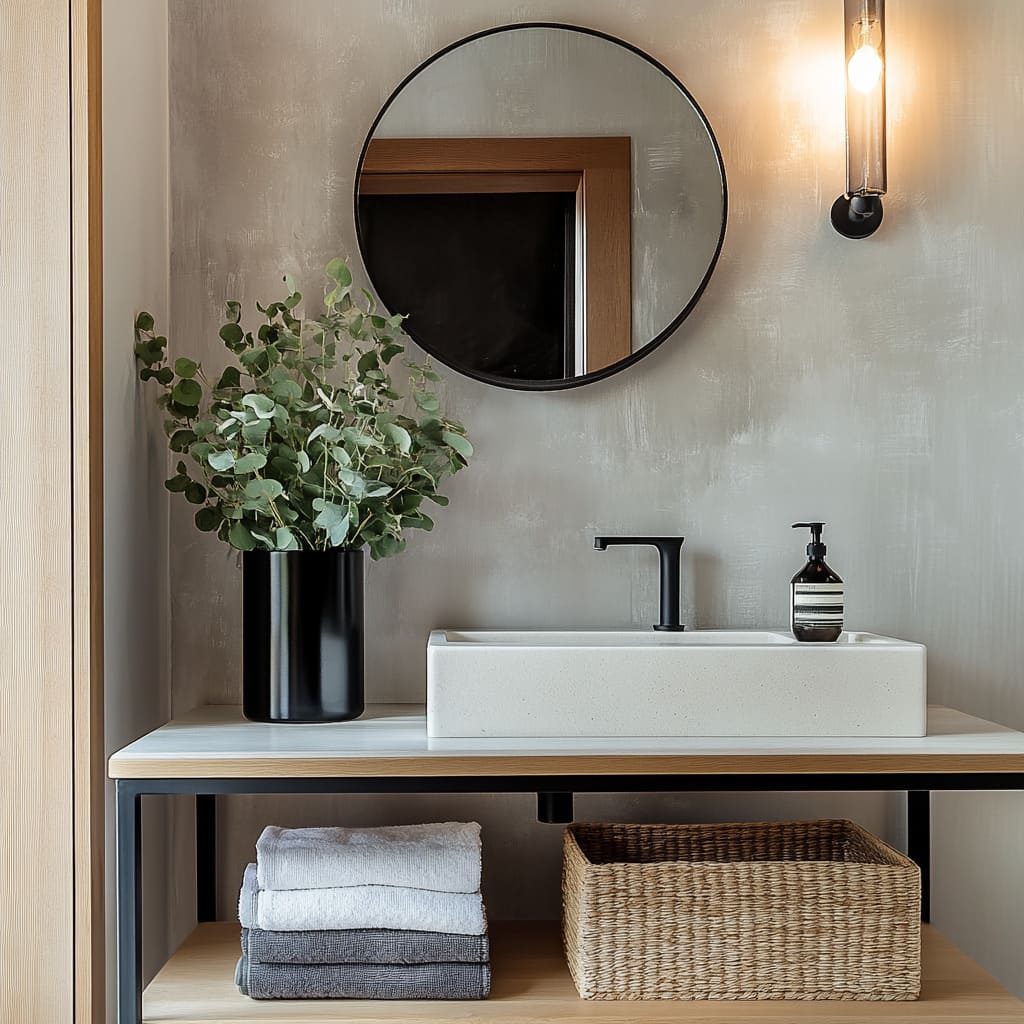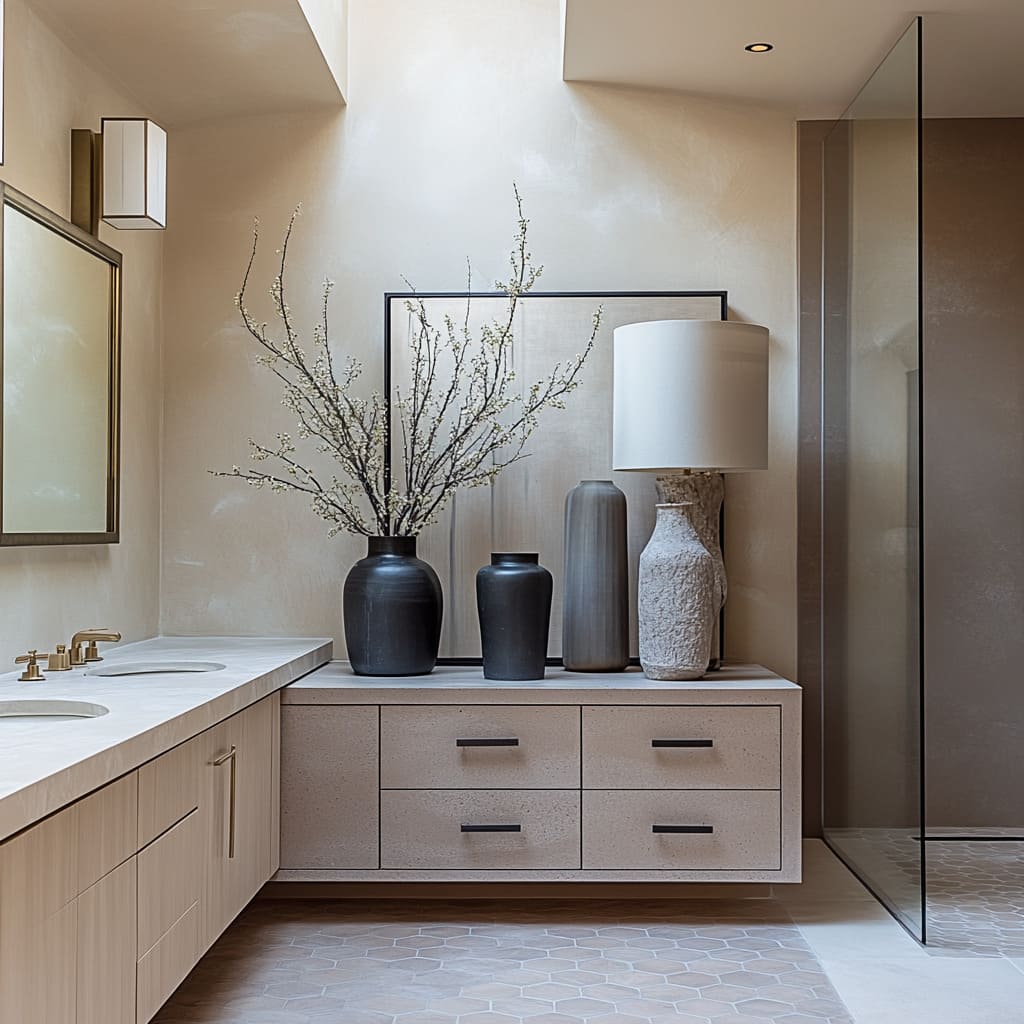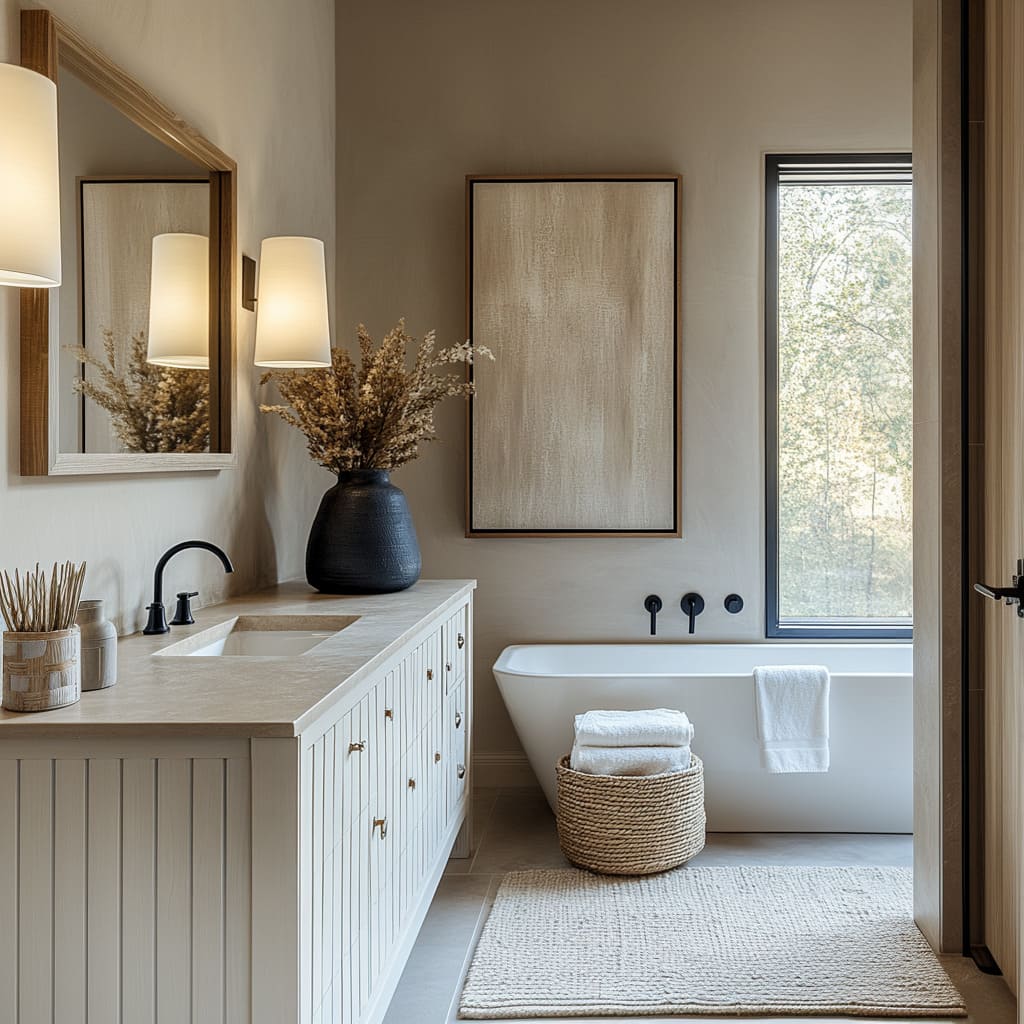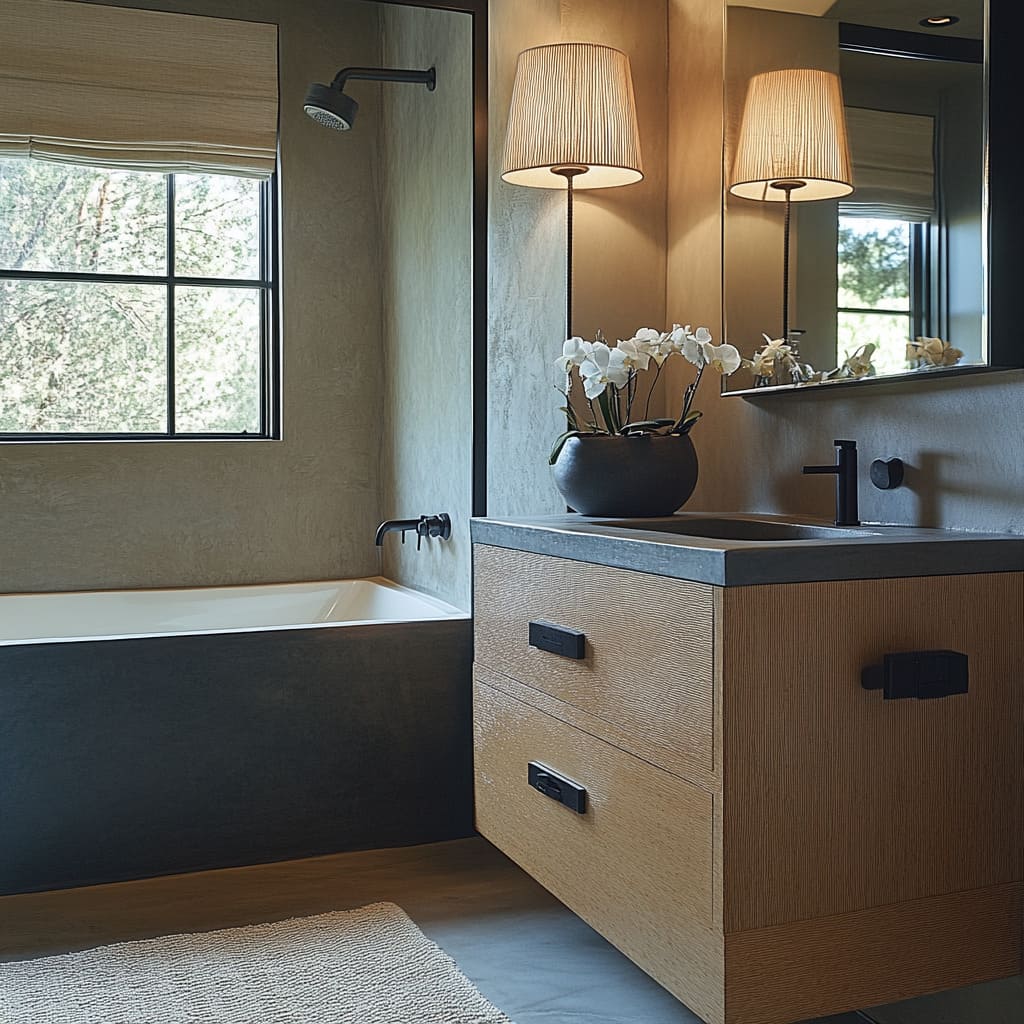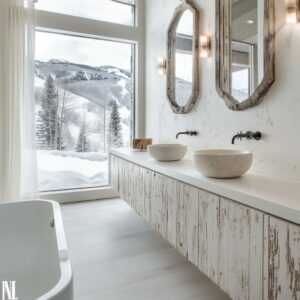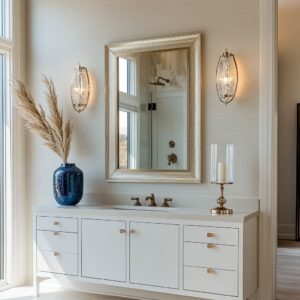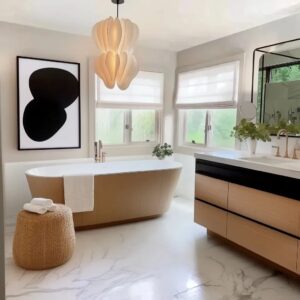Venetian plaster, known for its elegance, versatility, and tactile qualities, has proven to be a central design element in luxurious bathroom interiors. In this article we uncover principles, combinations, and creative ideas as fundamental to achieving these stunning spaces.
Below is a thorough analysis and actionable guide to designing interiors that elevate Venetian plaster into a defining feature.
Principles of Venetian Plaster in Bathroom Interiors
Material Quality and Texture
- Venetian plaster’s appeal lies in its hand-applied finish, which introduces subtle textures and tonal variations. These features create depth, making walls appear alive with light and shadow.
- Opt for high-quality lime-based Venetian plaster for durability in bathrooms, as it is naturally resistant to moisture and mildew when properly sealed.
Complementary Lighting
- Natural light plays a critical role in accentuating the plaster’s texture and tonal variation. Skylights, large windows, or clerestory windows create dynamic effects, making the plaster walls change character throughout the day.
- Artificial lighting enhances the plaster’s appearance by casting shadows or creating soft highlights. Wall sconces, pendant lights, and recessed fixtures are often used to add layers of light that emphasize the surface’s movement.
Color Selection
- Neutral tones like soft taupe, beige, smoky gray, and seafoam green dominate, as they create a calming and sophisticated backdrop.
- Bold tones such as charcoal or darker greens are used sparingly to evoke drama, but these are paired with light-colored vanities and countertops to maintain balance.
Venetian Plaster as a Focal Design Element
Seamless Coverage
Venetian plaster is often applied to entire walls or as a seamless backdrop across multiple surfaces. This allows the material to anchor the space and act as a canvas for other design elements.
Feature Walls
In some bathrooms, a single Venetian plaster wall is used as a feature. This wall is typically positioned behind the vanity or bathtub, acting as a dramatic focal point while other walls use contrasting materials like mosaic tiles or wood paneling.
Patterns of Design: Pairing Venetian Plaster with Other Elements
Materials and Finishes
- Stone Countertops: Smooth and polished stone like marble, quartz, or limestone complements the plaster’s matte texture, creating a rich material interplay.
- Wood Accents: Natural or light-toned wood cabinetry balances the plaster’s cool tones and adds organic warmth.
- Metal Fixtures: Brushed brass, matte black, or polished chrome fixtures create striking contrasts against the plaster, adding contemporary or vintage character to the space.
- Glass Enclosures: Frameless glass shower doors allow the plaster to remain unobstructed, ensuring it stays a dominant feature.
Decorative Accents
- Textured accessories like woven baskets, jute rugs, or ceramic vases echo the plaster’s organic appeal.
- Fresh greenery or dried floral arrangements add a pop of life and color to neutral-toned plaster.
Lighting Schemas
Daylight Optimization
- Skylights or large windows positioned near plastered walls ensure natural light washes over the surface, emphasizing its texture.
- Light directionality is key: East-facing windows create soft morning illumination, while overhead skylights provide consistent ambient light.
Artificial Lighting Placement
- Wall Sconces: Placed symmetrically on either side of mirrors, sconces cast soft, focused light, accentuating the plaster’s texture without harsh shadows.
- Recessed Ceiling Lights: These provide even illumination while avoiding glare, allowing the plaster’s tonal richness to shine.
- Pendant Lights: Hanging fixtures add verticality and dimension, while their diffused glow enriches the plaster’s warmth.
Combining Venetian Plaster with Functional Layouts
Floating Vanities
- The use of floating vanities maximizes the visibility of Venetian plaster walls, allowing their texture to remain uninterrupted.
- Minimalist designs in wood or painted cabinetry create clean lines that harmonize with the plaster’s subtle complexity.
Integrated Niches
Niches in showers or walls are often plastered to create continuity. These are accented with LED lighting or decorative objects to add functional elegance.
Contrast Through Fixtures
Dark matte fixtures (e. g.
, black faucets or towel racks) are juxtaposed against light-toned plaster to create modern, graphic contrast.
Innovative Ideas and Insights
Layered Color Applications
Multi-tonal Venetian plaster layers can create depth and mimic natural stone finishes. Soft gradients or slightly mottled patterns add a bespoke quality to the walls.
Moisture Control
Ensure proper sealing of plaster in high-moisture areas like showers. Combining Venetian plaster with waterproof treatments ensures durability without compromising aesthetics.
Combining Textures
Pair plaster with tactile materials such as mosaic tiles, fluted wood panels, or pebble-textured flooring to create a rich interplay of surfaces.
Vertical Emphasis
Tall, vertical mirrors or floor-to-ceiling plastered walls amplify the sense of space, making bathrooms feel more open and luxurious.
Examples of Successful Combinations
Calming Coastal Aesthetic
- Seafoam green Venetian plaster with light oak cabinetry, brushed brass fixtures, and a woven mirror frame creates a serene coastal feel.
- Add mosaic tile floors in pale blue hues to complete the theme.
Modern Drama
- Dark charcoal Venetian plaster contrasted with a floating light wood vanity, black stone countertops, and matte black fixtures creates a bold, contemporary space.
- Use diffused lighting from sconces and recessed fixtures to enhance the plaster’s depth.
Soft Minimalism
- Beige Venetian plaster paired with clean white stone surfaces, light wood elements, and simple black fixtures creates a minimalist yet inviting bathroom.
- Add texture through woven baskets and linen towels for subtle warmth.
Patterns of Work and Application
Sequential Application
Venetian plaster should be the first surface applied after foundational construction. Other elements, such as cabinetry and lighting, are installed afterward to preserve the plaster’s seamless appearance.
Integrating Decorative Elements
The plaster must be the design’s unifying feature, with all other elements selected to complement rather than compete. For example, fixtures and accessories should match the plaster’s tone or contrast subtly.
Accentuating Depth
Work with lighting designers to create lighting schemes that emphasize the plaster’s movement. This includes layered lighting (ambient, task, and accent).
Conclusion: Principles for Creating Venetian Plaster Bathrooms
Creating a stunning bathroom with Venetian plaster requires attention to materiality, lighting, and harmonious design elements. Key takeaways include:.
- Opt for neutral or bold plaster tones based on the desired ambiance.
- Pair Venetian plaster with contrasting but complementary materials, such as smooth stone and warm wood.
- Use natural and artificial lighting strategically to highlight the plaster’s texture and depth.
- Ensure functional elements like vanities, fixtures, and flooring enhance the plaster without detracting from its role as a focal point.
By combining these principles and patterns of work, Venetian plaster can transform any bathroom into a timeless, luxurious retreat.

